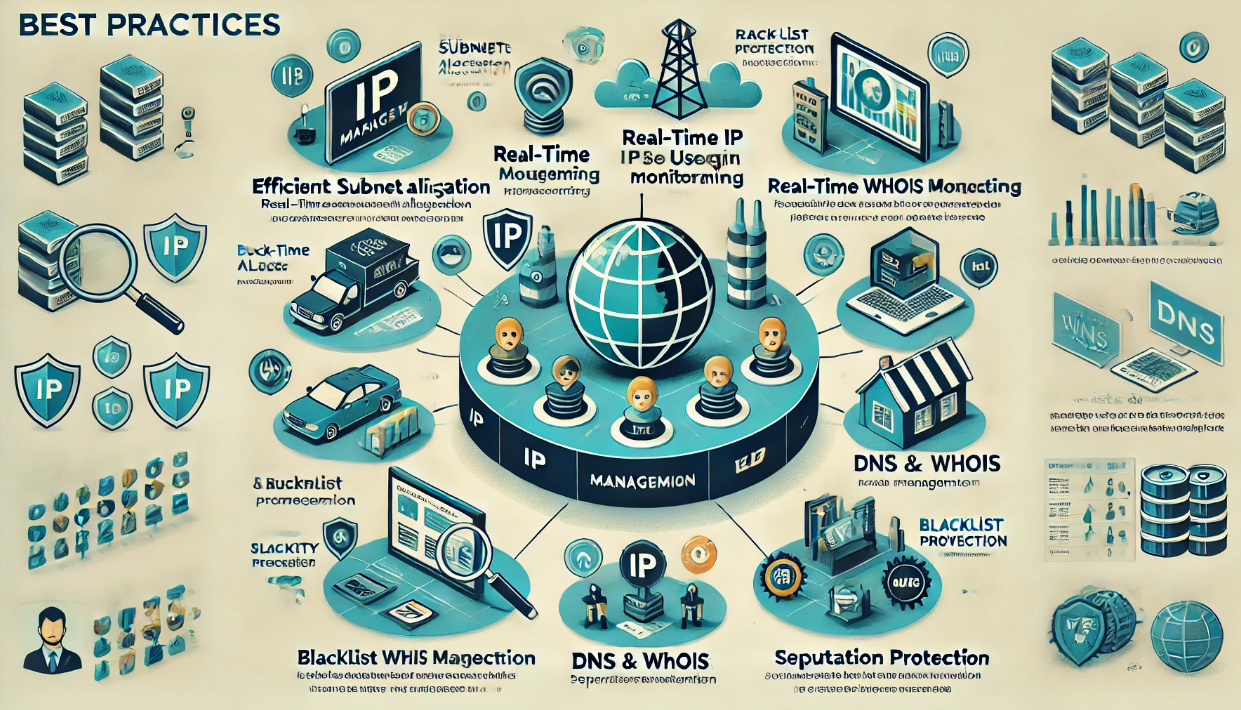IP Management Best Practices for Providers Offering Address Rentals
Introduction
For hosting providers and ISPs offering IP address rentals, proper IP management is critical for maintaining network integrity, avoiding blacklists, and ensuring high email deliverability. Without the right strategies, IP reputation can quickly deteriorate, leading to email failures, security risks, and blocked services.
In this guide, we’ll explore best practices for managing IP allocation, keeping IPs clean, and ensuring a stellar sender reputation.
1. Strategic IP Allocation: Assigning the Right IPs to the Right Users
Efficient IP allocation is the foundation of good management. Poor assignment can lead to spam abuse, security breaches, or even IP reputation damage.
✅ Segmentation by Usage: Assign IPs based on intended use case, such as:
- Dedicated IPs for email marketing (to protect transactional email IPs)
- Web hosting IPs separate from VPN or proxy IPs
- E-commerce clients using separate, trusted IP pools
✅ Monitor Customer History: Check the past behavior of customers before assigning them premium or clean IPs.
✅ Rotate & Refresh Allocations: Regularly reallocate underused IPs to maintain efficiency and avoid reputation stagnation.
2. Preventing & Managing IP Blacklisting
One of the biggest risks in IP management is blacklisting—when an IP gets flagged for spam or malicious activity. This can severely impact email deliverability and network trustworthiness.
Proactive Monitoring:
- Use tools like Spamhaus, Barracuda, and MXToolBox to check IP reputation.
- Set up real-time blacklist alerts to take immediate action.
Strict Abuse Policies:
- Implement acceptable use policies (AUPs) to prevent spam, phishing, or botnet activity.
- Enforce rate-limiting on outbound emails to prevent spam bursts.
Quick Delisting Strategies:
- If an IP is blacklisted, follow blacklist removal protocols from databases like Spamhaus, SURBL, and UCEPROTECT.
- Identify the root cause (e.g., spam campaigns, malware infections) and resolve it before requesting delisting.
3. Enhancing Email Deliverability & IP Reputation
For providers renting out email-specific IPs, maintaining a high sender score is essential for inbox placement.
Implement Proper Email Authentication:
- SPF (Sender Policy Framework) – Verifies which mail servers are authorized to send emails.
- DKIM (DomainKeys Identified Mail) – Adds a cryptographic signature to emails to confirm authenticity.
- DMARC (Domain-based Message Authentication, Reporting & Conformance) – Prevents spoofing and phishing attacks.
Use Warm-Up & Reputation Building Tactics:
- New IPs should gradually increase sending volume to avoid triggering spam filters.
- Regularly monitor bounce rates and remove inactive recipients.
Maintain a Clean Email List:
- Encourage double opt-in for mailing lists.
- Use email validation services to filter out invalid addresses.
Encourage Proper Email Sending Practices:
- Limit sudden spikes in outbound emails.
- Maintain a low spam complaint rate (under 0.1%).
4. Security & Abuse Prevention Measures
To prevent IP abuse, security should be a top priority.
Implement DDoS Protection & Firewalls:
- Use Web Application Firewalls (WAFs) and intrusion prevention systems (IPS) to filter malicious traffic.
- Monitor unusual spikes in traffic or outbound emails.
Automated Abuse Detection:
- Use AI-driven monitoring tools to detect suspicious behavior.
- Enable rate limiting for email sending, VPN usage, and file sharing.
Customer Verification & Compliance:
- Enforce KYC (Know Your Customer) policies to prevent fraudulent sign-ups.
- Ensure customers follow regional regulations (GDPR, CAN-SPAM, etc.).
5. Regular IP Reputation Audits & Maintenance
Consistent monitoring and proactive action can prevent problems before they escalate.
✅ Monthly Reputation Audits:
- Check email deliverability rates and IP scores.
- Track blacklist status and resolve any flagged issues.
✅ IP Recycling Best Practices:
- When reclaiming an IP, clean it up before reassigning.
- Run a pre-check for blacklist status before allocation.
✅ Customer Education:
- Provide guidelines on responsible email sending and security.
- Offer IP reputation management services as a premium add-on.
Final Thoughts: Mastering IP Address Management for Long-Term Success
Managing IP addresses effectively is not just about allocation—it’s about maintaining trust, preventing abuse, and ensuring high deliverability. By implementing proactive monitoring, strict policies, and security measures, providers can build a reliable, reputation-friendly IP ecosystem.
Looking to optimize your IP rental strategy? Start implementing these best practices today to ensure clean, secure, and high-performing IP management.

